
TONGLI cement ball mill can grind portland cement clinker, gypsum and other ingredients into fine powder under the mutual impact and friction between steel balls and materials. Tongli has been engaged in the production of cement ball mill equipment since 1958. We have gone through 65+ years, from our first 1.2m diameter cement ball mill to the world's largest 12m diameter Semi-Autogenous Grinding mill. TONGLI cement grinding ball mill is mainly composed of feeding device, cylinder, lining plate, grinding body, partition plate, discharging device, transmission system and other parts. It is worth noting that Tongli also has its own foundry! All ball mill castings such as girth gears, riding ring and supporting rollers are all cast by Tongli's three-stage electric arc furnace and alkaline phenolic resin sand. German spectrometer is used to ensure the quality of molten steel and Ultrasonic testing/Magnetic testing is used to ensure that the castings are defect-free. We offer two types of ball mill edge drive and center drive based on customer's preference and process flow design. In terms of product characteristics, TONGLI ball mill's prodcut has "particle morphology close to spherical, which is conducive to raw material calcination and cement hydration hardening", which is why our ball mill is popular.
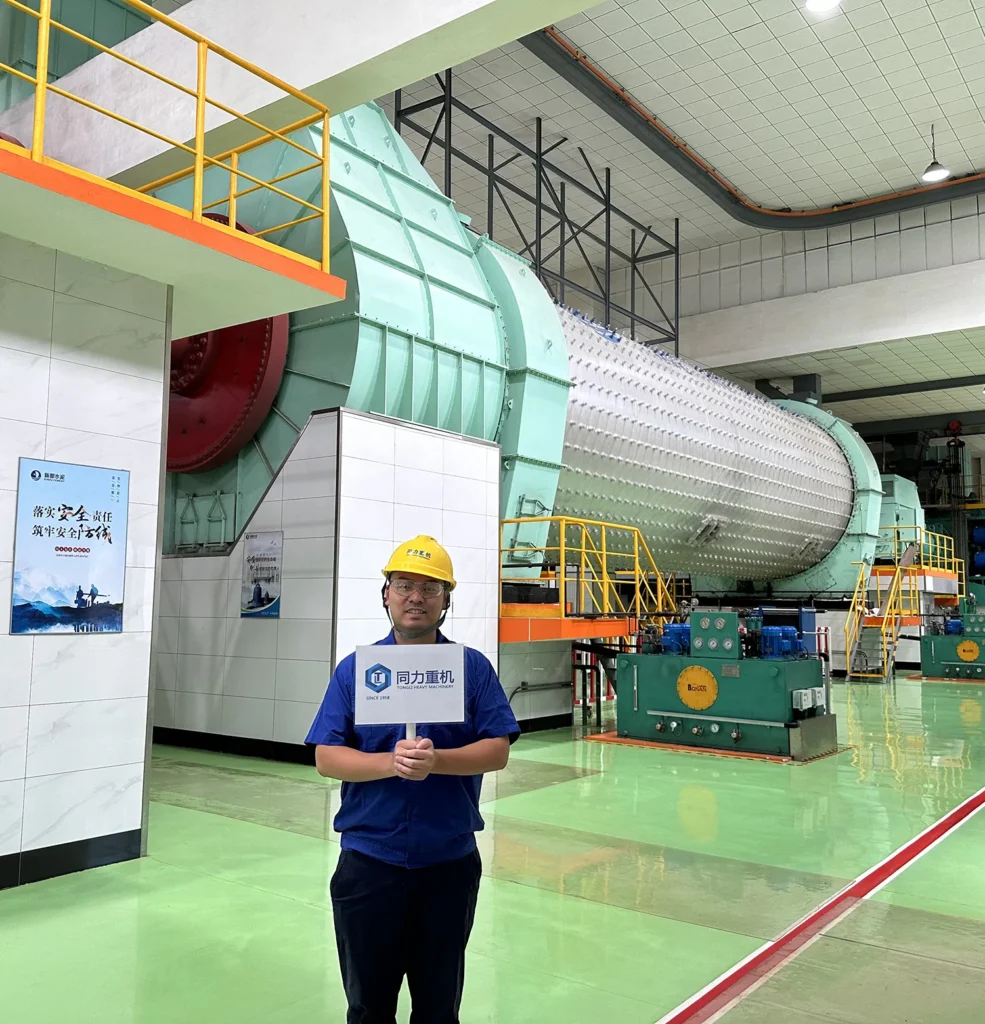

The Ultimate Cement Grinding Solution
A MACHINE YOU CAN DEPEND ON!
"Elevate Your Efficiency: Our Cement Grinding Ball Mill—Designed for Superior Clinker Grinding Performance and Precision!"
Tongli's patented grate plate can reasonably control the time the material stays in the cylinder, ensuring that the material is fully ground, which helps to improve the fineness and uniformity of the product.
Tongli is one of the few companies in the industry that can perform overall annealing on the cylinder of the ball mill. Tongli is equipped with a 6x20m natural gas heat treatment furnace, which can relieve stress on the entire ball mill. The cylinder body is fully automatically welded.
The core parts of the ball mill, such as the main shaft, cylinder, gears, etc., are subjected to heat treatment processes such as quenching, tempering, and surface hardening to enhance their mechanical properties. Quenching can improve the hardness and wear resistance of steel, while tempering can increase the toughness of steel and reduce its brittleness.
| Specification (Φ) | Shell Speed (r/min) | Loadage (t) | Prod. Capacity (t/h) | Main Motor (kW) | Main Reducer | Weight (t) |
| Φ2.4×10 | 20.0 | 53 | 19–22 | YR630-8 / 630 | ZD80 | 106 |
| Φ2.4×12 | 20.8 | 63 | 23–25 | YR800-8 / 800 | 710 | 112 |
| Φ2.4×13 | 20.8 | 65 | 24–26 | YR800-8 / 800 | 710 | 120 |
| Φ2.6×13 | 19.1 | 80 | 26–28 | YR1000-8 / 1000 | 710 | 158 |
| Φ3.0×11 | 18.8 | 100 | 35–40 | YR1250-8 / 1250 | 800 | 185 |
| Φ3.0×12 | 18.8 | 100 | 35–40 | YR1250-8 / 1250 | 800 | 195 |
| Φ3.0×13 | 18.8 | 108 | 38–42 | YR1400-8 / 1400 | 900 | 210 |
| Φ3.2×13 | 18.4 | 125 | 50–55 | YR1600-8 / 1600 | JDX1000 | 223 |
| Φ3.2×13 | 18.4 | 125 | 50–55 | YR1600-8 / 1600 | JS120-A | 178 |
| Φ3.5×11.5 | 16.6 | 135 | 110 (closed loop) | YRKK800-8 / 2000 | MF200-A | 179.5 |
| Φ3.5×13 | 16.6 | 140 | 70 | YRKK800-8 / 2000 | MF200-A | 193 |
| Φ3.8×13 | 16.6 | 180 | 70–75 | YR2500-8 / 2500 | JS130-C | 222 |
| Φ4.0×13 | 16 | 191 | 80–85 | YRKK800-8 / 2800 | MFY280 | 270 |
| Φ4.2×13 | 15.6 | 230 | 90 (closed loop) | YRKK900-8 / 3550 | JB150-B1 | 254 |
| Φ4.6×13 | 14.9 | 270 | 120 (closed loop) | YRKK1000-8 / 4500 | JST160 | 292 |
| Φ6.2×18 | 14.0 | 400 | 150–160 | YRKK12000-8 / 12000 | ZD150 | 500 |
| Category | Details |
| Ball mill Inner diameter | Φ4200mm |
| Ball mill inner wall length | 13000mm |
| Ball mill effective inner diameter | First chamber: Φ4020mm; Second chamber: Φ4060mm |
| Ball mill effective length | First chamber: 3080mm; Second chamber: 9420mm |
| Application | Cement clinker/limestone/coal |
| Grinding Method | Circulating flow |
| Particle Size of Material Entering the Mill | ≤2mm, 90% passing |
| Production Capacity | ≥180t/h (with roller press, PO42.5) |
| Fineness of Finished Product Leaving the Mill | 3400cm²/g |
| Rotational Speed of Milling Machine | 15.6r/min |
| Maximum Loading Capacity of Grinding Media | 240t |
| Transmission Mode | Central transmission/Edge drive |
| Power of Main Motor | 3550kW |
| Cooling Water Consumption of Sliding Shoe Bearings | 3.5×2 (units) m³/h |
| Total Weight of Equipment | ~256.5t |
| Parts | Quantity | Weight (kg) | Material | Remarks |
| Rotating Cylinder (Shell + Ends) | 1 Set | 125,000 | 20G-Z25, Medium Alloy Steel | Includes shell, manholes, liners not included |
| Slide Shoe Bearing (Inlet, with PT100) | 1 Set | 15,000 | ZSnSb11Cu6 | With temperature sensor |
| Slide Shoe Bearing (Outlet, with PT100) | 1 Set | 15,000 | ZSnSb11Cu6 | With temperature sensor |
| Discharge Unit Assembly (with Stand) | 1 Set | 1000 | Structural Steel | Outlet support and housing |
| Discharge Outlet Cover (with Stand) | 1 Set | 15,000 | Structural Steel | With dust seal provisions |
| Slide Shoe Installation Kit | 1 Set | 300 | Structural Parts | Includes shims and fasteners |
| Slide Shoe Lubrication System(Oil station) | 1 Sets | 1000 | Steel + Pump Assembly | Hydraulic oil system with dual pumps |
| Main Gear | 1 Set | 75,000 | 42CrMo Forged Steel | Mounted on shell flange |
| Total | 247t | Approximate total dry weight (bare mill) |
QUALITY NEVER GOES OUT OF STYLE
In the production cost of cement, the power consumption of grinding accounts for 35%~40% of the cement cost. Cement grinding is the last and most important key link to control cement quality. To a certain extent, the quality of cement clinker grinding can make up for the lack of clinker quality (that is, grinding can improve cement quality), and maximize the qualified rate of cement leaving the factory while saving raw materials.
Cement ball mill has two transmission modes, center transmission and edge transmission. The material is fed into the first bin of the mill evenly through the feeding device and the hollow shaft spiral. There is a stepped lining or corrugated lining in the bin, which contains steel balls of different specifications. The centrifugal force generated by the rotation of the cylinder brings the steel balls to a certain height and then falls, which produces a heavy impact and grinding effect on the material. After the material is coarsely ground in the first bin, it enters the second bin through a single-layer partition plate. The bin is inlaid with a flat lining plate and contains steel balls to further grind the material. The powder is discharged through the discharging grate plate to complete the grinding operation.
1. High chromium alloy lining is one of the most common lining materials in cement mills. The main component of high chromium alloy is chromium. After the addition of chromium reaches more than 12%, its hardness can reach HRC58-65. It has excellent wear resistance and is a common material for cement ball mill linings. High chromium alloy linings are usually produced using investment casting technology. The advantage is low cost, but the disadvantage is that the thermal expansion coefficient is large and it is prone to cracking, so there are certain requirements for installation workers.
2. Aluminum silicate ceramic lining has a small thermal expansion coefficient, high hardness, outstanding wear resistance, and can resist high temperature and acid and alkali corrosion. The advantages of aluminum silicate ceramic lining are corrosion resistance, wear resistance, and long service life, but the price is relatively high. Some customers cannot contain iron in their materials, so this ceramic lining will be used.
3. Rubber lining is rarely used in cement mills, mainly for earthquake resistance and vibration reduction, but rubber lining also has certain wear resistance and is also used in some occasions. The advantages of rubber lining are good wear resistance and can reduce noise and vibration. It is more commonly used in mining ball mills.
For a small cement plant with an annual output of 25 million tons, a ball mill with a capacity of 3.2x14m is generally selected to meet production needs. For large cement plants with an annual output of more than 50 million tons, it is recommended to choose a ball mill with a larger capacity, such as 5.5.0x15m or even larger models, to ensure the continuity and efficiency of production. The hardness and humidity of different cement raw materials will affect the selection of ball mills. Generally, we recommend that customers send us the raw material report, and our technicians will select the model according to the moisture content of the material.
1. Uniform grinding effect: The cement ball mill adopts the working principle of rolling grinding. Through the contact and friction between the ball and the material, the material is uniformly squeezed and sheared during the grinding process. Compared with other grinding equipment, ball mills can better control the distribution of cement particles, so that the ground cement has a more uniform fineness. The uniformity of fineness is an important indicator to ensure the quality of cement, which directly affects the hydration reaction speed and strength growth performance of cement.
2. Excellent morphology of cement particles: The cement particles ground by the ball mill are spherical or polyhedral in shape. This morphology is conducive to the full contact of cement with water during use and promotes the hydration reaction. In contrast, the cement particles ground by the vertical mill often have a certain flat shape, and the hydration reaction rate is relatively slow. Studies have shown that cement produced by ball mills has good performance in strength, fluidity and durability.
3. Improve cement strength: In the process of cement grinding, there is a direct relationship between grinding fineness and cement strength. Cement ball mills can effectively control the fineness of cement powder, usually grinding to a standard range of 300-400㎡/kg of specific surface area, which can ensure that the cement forms a dense structure during the hardening process and enhances early and late strength. In addition, by optimizing the liner design and ball ratio, the ball mill can further improve the grinding efficiency, increase the fineness of the powder, and further improve the compressive strength of cement.
4. Improve cement fluidity: The cement powder produced by the ball mill has good fluidity and is easy to operate in the subsequent mixing, conveying and pouring process. Good fluidity not only improves construction efficiency, but also reduces the void ratio in concrete, thereby improving the density and durability of concrete. In contrast, the cement ground by the ball mill is more plastic during use and is suitable for different construction environments and technical requirements.
5. Compensate for insufficient clinker quality: In actual production, the quality of clinker may be affected by various factors, such as fluctuations in mineral composition or unstable burning quality. The ball mill can make up for the shortcomings in clinker quality through its powerful grinding capacity. Through appropriate fineness control and grinding technology, the ball mill can improve the early strength and hydration heat release of cement, effectively compensate for the impact of clinker quality, and ensure the qualified rate and stability of cement leaving the factory.
The output of cement grinding system is affected by the grindability of clinker, and the power consumption of grinding varies greatly. The grindability of clinker is related to the content of each mineral component in clinker and the cooling rate of clinker. When the content of C3S in the clinker mineral composition is high, the content of C4AF is low, the cooling rate of clinker is fast, the clinker mineral forms fine crystal glass, and the texture is brittle, the grindability is good; if the content of C2S and C4AF in the clinker mineral composition is high, the clinker is tough, and the grindability coefficient is small, the clinker is difficult to grind and the power consumption is relatively high. In addition, the grindability of clinker is also related to the calcination atmosphere, calcination temperature, heating rate, etc. For example, the grindability of overburned material or yellow core material is relatively poor.
To improve the output of cement ball mill, we can start from the following aspects. 1. Optimize the grinding body gradation, select the appropriate steel ball size and proportion according to the material characteristics, and enhance the grinding efficiency; 2. control the particle size of the material entering the mill, reduce the particle size through pretreatment, and reduce the mill load; 3. adjust the grinding process design, such as using closed-circuit grinding, timely separate qualified fine powder, and avoid over-grinding; 4. maintain the equipment well, ensure that the liner, partition board and other components are normal, and reduce downtime due to failure, so as to comprehensively improve the production efficiency of the ball mill.
This depends on the customer's working conditions, site conditions and budget. The ball mill has strong adaptability to materials and can handle materials of various hardnesses. The grinding can be optimized by adjusting the grinding body, but the system energy consumption is relatively high and occupies a large area. The vertical roller mill integrates crushing, grinding and drying. It has high grinding efficiency, low energy consumption, and small footprint. It is suitable for large-scale continuous production. However, it is sensitive to material moisture and hardness, and is easily affected by impurities. The maintenance difficulty and cost are relatively high. If you pursue traditional stability and adaptability to complex materials, choose a ball mill; if you value high efficiency, energy saving, and large-scale production, a vertical roller mill is better.
1. Low grinding efficiency: wear of the grinding body leads to unreasonable grading, abnormal material flow rate in the mill, easy to over-grinding or insufficient grinding, increased energy consumption and decreased output.
2. Wear of lining and grinding body: the crushing rate of steel balls increases after long-term impact wear, and the lining bolts loosen or break, which may cause vibration of the cylinder or even leakage.
3. Bearing overheating: when the sliding shoe bearing or rolling bearing is not lubricated enough and the cooling water flow is abnormal, it is easy to exceed the limit due to friction heating, which may cause shaft sticking accidents in severe cases.
4. Poor system ventilation: too low wind speed in the mill will accumulate fine powder, forming "paste ball" and "paste lining" phenomenon; too much ventilation will cause the fineness of the finished product to become coarser, and the air volume needs to be adjusted in combination with the powder selector.
5. Main motor overload: too high material moisture or sudden change in feed amount may cause a sudden increase in the load in the mill, triggering the motor current over-limit protection shutdown.
It is necessary to ensure stable operation of the equipment by regularly monitoring vibration, temperature, current and grinding body grading adjustment.
As a manufacturer, we recommend that customers specify different inspection plans according to the year, month and day.
1. Daily inspection (per shift): check bearing temperature (≤65℃), lubrication system oil level, monitor abnormal operation noise, check whether the liner bolts are loose, and record mill current fluctuations.
2. Weekly/monthly maintenance: clean up debris at the feed inlet, detect transmission gear meshing clearance (0.15-0.25 times the modulus), replace lubricating oil (according to oil quality test results), tighten each connecting bolt, and check the liner wear (wear exceeds 30% and needs to be replaced).
Quarterly maintenance: disassemble and weigh the grinding body, add worn steel balls (according to the grade ratio), detect the main bearing clearance (sliding bearing ≤0.15mm), calibrate the speed sensor, and clean the cooling system scale (chemical descaling is required when the water hardness is high).
3. Yearly maintenance: dismantle the main bearing and replace the babbitt alloy, replace the liner with excessive wear (wear > 50%), inspect the gear wear of the gearbox (tooth surface peeling area > 10% needs to be repaired), calibrate the horizontality of the cylinder (error ≤ 0.1mm/m), and test the insulation resistance of the main motor (≥ 10MΩ). Maintenance needs to be combined with the equipment running hours (such as mandatory maintenance every 2000 hours) and dynamic adjustment of online monitoring data.
The fineness of the finished product of the ball mill can be adjusted from the following aspects:
1. Grinding body parameters: steel ball grading (a high proportion of large balls increases crushing force, and more small balls enhance grinding), loading (need to reach the critical filling rate of 30%-35%) and wear degree (grading imbalance when wear exceeds 10%) directly affect the grinding efficiency.
2. Cylinder speed: It needs to be maintained at 75%-85% of the critical speed (such as the speed of a Φ4.2m mill is about 15.6r/min). If the speed is too low, the kinetic energy of the grinding body is insufficient, and if it is too high, the centrifugal force causes idling against the wall.
3. Material characteristics: particle size of the material entering the mill (≤2mm and 90% passing), moisture (>1.5% is easy to stick to the ball) and grindability (when the Bond work index is >16kWh/t, the grinding body energy needs to be increased).
4. Process parameters: powder selector frequency (high frequency improves fine powder separation efficiency), circulation load rate (controlled at 100%-150%) and ventilation volume (40-60m³/(t・h) to ensure timely discharge of fine powder).
5. Equipment status: lining wear (grinding efficiency decreases when groove depth is <50mm), partition plate grate slit blockage (slit width >8mm needs to be cleaned) and grinding body leakage (damage to partition plate leads to chaotic grading).
Sliding bearings (sliding shoe bearings) play a key role in supporting the cylinder and ensuring its smooth operation in cement ball mills. They are also one of the important accessories of ball mills.
As the main supporting component of the mill cylinder, the sliding shoe bearing bears the huge weight of the cylinder and the grinding body of about 200-300 tons through a large-area sliding friction pair. Its structure is usually composed of a base, a bushing, a lubrication system and a cooling system. The bushing is made of highly wear-resistant Babbitt alloy or wear-resistant cast iron material, forming a precise matching surface with the cylinder shaft neck. Through high-pressure oil film lubrication, static pressure + dynamic pressure composite lubrication, sliding friction is converted into liquid friction, reducing wear and energy consumption, and the friction coefficient can be reduced to 0.001-0.003.
At the same time, the sliding shoe bearing needs to bear the radial load and part of the axial force during the operation of the mill. Its cooling system usually uses circulating water to promptly remove the heat generated by friction and control the bearing temperature to ≤65℃ to avoid bushing burning failure due to overheating. In addition, the self-aligning performance of the bearing can compensate for the installation error of the cylinder and the slight runout during operation, ensuring the long-term stable operation of the mill.
The lubrication of cement ball mill can be simply summarized into four points: lubrication of sliding shoes, lubrication of large and small gears, lubrication of reducers, and lubrication of roller bearings. Of course based on the transmission method liek center drive or edge drive it differs slightly but generally can be listed as follows:
1. Main bearing (slipper bearing): adopts high-pressure static pressure + low-pressure dynamic pressure composite lubrication system, uses 46# or 68# anti-wear hydraulic oil, the oil pressure needs to reach 10-15MPa to form an oil film during static pressure start, and the low-pressure oil supply pressure is 0.1-0.3MPa during normal operation. The oil temperature is controlled at 40-60℃, and the oil quality needs to be tested regularly (water content ≤0.1%, acid value ≤0.5mgKOH/g).
2. Transmission gear (open gear): adopts spray lubrication, using extreme pressure gear oil or semi-fluid grease with a viscosity of 1000-2000cSt. The spray amount is calculated based on the tooth surface width of 0.3-0.5L/min・cm, and the spray frequency is 1-2 times per hour. It is necessary to regularly clean the coking on the tooth surface (clean with solvent) and test the oil film thickness (≥50μm).
3. Reducer: Adopt forced circulation lubrication, use 220# or 320# medium-load industrial gear oil, keep the oil level at 1/2-2/3 of the sight glass, control the temperature difference between the inlet and outlet of the cooler at 8-12℃, replace the oil every 5000 hours of operation, and the filtration accuracy must be ≤25μm.
4. Bearing seat (auxiliary transmission): Adopt grease lubrication, use lithium-based grease (NLGI grade 2), the filling amount is 1/3-1/2 of the bearing cavity volume, add grease every 2000 hours of operation, shorten the grease cycle when the temperature exceeds 70℃, and ensure that the lubrication points are well sealed to prevent dust intrusion.
Basically we can tell you that double chamber ball mill is more expensive than single chamber ball mill and here's why: The double-chamber cement ball mill improves the grinding efficiency through the partition grinding mechanism. Its professional principle is as follows: The mill cylinder is divided into two chambers by a partition plate. Each chamber is configured with grinding bodies and internal structures according to the grinding needs:
The first chamber (coarse grinding chamber): mainly undertakes the crushing function. The chamber is equipped with large-diameter steel balls (Φ50-Φ100mm). The lining plate adopts stepped or corrugated type. The block material is crushed to 50-100μm by the impact of the steel balls. The partition plate is designed as a grate plate with a guide groove, which allows qualified fine materials to pass through and blocks large particles.
The second chamber (fine grinding chamber): focuses on material grinding, and is equipped with small-diameter steel segments or steel balls (Φ20-Φ40mm). The lining plate is mostly a flat lining plate. The material is ground to 30-45μm through the grinding and sliding friction of the grinding body. An activation device (such as an activation ring) can be installed in the chamber to enhance the material fluidity and grinding contact area.
The double-chamber structure realizes "crushing before grinding, and graded grinding", avoiding "over-grinding" and "grinding blind area" caused by mixed grinding of large and small particles in a single-bin mill. The power consumption of grinding can be reduced by 10%-15%, and the hourly output can be increased by 15%-20%. It is especially suitable for fine grinding of high-hardness materials such as cement clinker.
Yes, there are two types of ball mill upgrades: one is to upgrade and modify the ball mill by increasing the power and the number of bins to increase production. The other is to upgrade the entire ball mill system, such as changing an open-circuit ball mill to a closed-circuit ball mill grinding system.
First let's talk about upgrade the ball mill itself: 1. Mechanical system upgrade, check the wear of the cylinder. If the wall thickness is reduced by more than 15%, it needs to be welded or replaced. 2. Replace the worn liner with high chromium cast iron or ceramic liner, and the service life will be increased by 2-3 times. 3. Calibrate the main bearing clearance (sliding bearing clearance ≤0.15mm). 4. Repair or replace the gear pair. If the tooth surface wear exceeds the modulus by 15%, it needs to be reground.
Optimize grinding efficiency: Modify the partition plate structure (such as using a new activated grate plate to improve the material flow rate), optimize the grinding body grading (adjust the steel ball diameter distribution according to the grindability of the clinker), and install a high-efficiency screening device (reduce over-grinding). For old mills, the single bin can be changed to a double bin structure to achieve graded grinding, and the power consumption can be reduced by 10%-15%.
If owner think the above upgrade does not significantly increase the output, then the owner can consider the following core transformation content of open circuit to closed circuit:
1. Adding classification equipment: Connecting a high-efficiency powder selector (such as O-Sepa powder selector or V-type powder selector) in series at the discharge end of the mill, using the airflow classification principle to separate qualified fine powder (30-45μm), and returning unqualified coarse powder to the mill for re-grinding. The air volume of the powder selector needs to match the hourly output of the mill (usually configured at 2000-2500m³/h・t).
2. Reconstruction of air duct system: Adding a main fan (air pressure ≥5000Pa) and an air duct network to form a closed-loop cycle of "mill - powder selector - dust collector". It is necessary to calculate the air duct diameter (wind speed is controlled at 18-22m/s) and the dust collector processing capacity (filter bag area is designed at 0.8-1.2m²/m³・min) to ensure the stability of the system negative pressure (negative pressure at the inlet of the powder selector - 2000~-3000Pa).
3. Grinding body gradation: reduce the proportion of large steel balls (the average diameter of the steel balls in the coarse grinding bin is reduced by 10-20mm), increase the filling rate of the grinding body in the fine grinding bin (increase by 5%-8%), and adapt to the characteristics of the closed-circuit system of "multiple cycles and fine grinding".
For the ball mill as a whole machine, tongli ball mill has a designed service life time of 40 years, Under reasonable maintenance (such as mandatory maintenance every 2000 hours and regular replacement of wearing parts), the main body of the mill can serve for 25-35 years, and the life of the Tongli ball mill in dry areas can reach more than 40 years. However, it should be noted that high-hardness materials (such as slag content > 30%) or long-term overload operation will shorten the life by 30%-50%, while the use of wear-resistant upgrades (such as ceramic lining + high-chromium steel balls) can extend the service life by 10-15 years.
For separate parts of ball mill, the service life span are as follows:
1. Ball mill shell: Welded with Q345R low alloy steel plate, the wall thickness thinning rate under normal wear is about 0.1-0.3mm/year. When the designed wall thickness is 20-30mm, the service life can reach 20-30 years (regular welding repair is required).
2. Ball mill Liner: The service life of high manganese steel liner is about 3-5 years, high chromium cast iron liner can reach 5-8 years (wear exceeds 50% and needs to be replaced), and the service life of ceramic liner can reach more than 10 years under low impact conditions.
3. Ball mill Grinding body: The annual wear rate of steel ball is about 8-15% (the average annual diameter of Φ100mm steel ball decreases by 8-15mm), and it needs to be replenished regularly; the wear rate of steel section is slightly lower, and the service life is about 5-7 years.
4. Ball mill main bearing: The service life of sliding bearing Babbitt alloy bearing bush is 8-12 years (when the temperature is controlled ≤65℃), and the service life of rolling bearing (rare in large mills) is about 10-15 years.
5. Ball mill transmission gear: The service life of open gear pair (hardness HB220-260) is 10-15 years, and that of hardened gear (tooth surface hardness ≥HRC55) can reach more than 20 years.
The installation of the cement ball mill can be simply divided into the following steps: civil foundation calibration, transmission chassis installation, oil station and electrical installation, and finally commissioning.
Step 1: Foundation preparation before installation
You need to choose a flat and strong bearing capacity ground, cast the foundation with concrete (strength grade not less than C30), and the foundation load-bearing capacity must reach 2-3 times the total weight of the equipment (for example, the foundation load-bearing capacity of 1 ton equipment is at least 2 tons). At the same time, the surface flatness error of the foundation must be controlled within ≤2 mm per meter, and the reserved anchor bolt hole diameter should be 50 mm larger than the bolt to prepare for the subsequent fixing of the equipment.
Step 2: Positioning and horizontal calibration of the ball mill shell
Place the ball mill shell on the foundation through the hoisting equipment, and use the level to calibrate the horizontality of the fuselage: the lateral error is controlled within ≤0.1 mm per meter, and the longitudinal error is ≤0.05 mm per meter (fine-tuning can be done through shims). After calibration, insert the anchor bolts into the reserved holes, and the bolt burial depth must be 15-20 times the diameter (for example, the M24 bolt burial depth is about 360-480 mm), and then cast and fix it with high-strength concrete, and tighten the nuts after the concrete solidifies.
Step 3: Installation and debugging of the transmission system
Install the motor, reducer and pulley (or coupling), ensure that the parallelism error between the motor and reducer axis is ≤ 0.1 mm per meter, and the misalignment of the pulley does not exceed 1 mm (can be detected with a ruler or dial indicator). If it is a gear transmission, the meshing clearance needs to be adjusted (such as the gear clearance of the module 8 mm is controlled at 1.2-1.6 mm), and the gear contact area is guaranteed to reach more than 70% of the tooth surface. Finally, install the protective cover and test the strength of the protective cover with a force of 10 N to ensure safe and reliable operation.
Step 4: Lubrication and electrical system connection
When laying the lubricating oil pipe, the interface needs to be wrapped with polytetrafluoroethylene raw tape for sealing. After the oil pump is installed, the pressure needs to be adjusted to 0.15-0.3 MPa, and the oil temperature sensor should be installed 100-150 mm away from the bearing. When installing the electrical system, the motor insulation resistance must be ≥5 megohms, the grounding resistance must be ≤4 ohms, the inverter parameters must be set to a starting frequency of 5 Hz, an acceleration time of 10-15 seconds, and an emergency stop button (response time ≤0.5 seconds).
Step 5: Comissioning and load-on testing
First, perform an pre-commissioning test, run continuously for 8 hours, monitor the bearing temperature rise to not exceed 40°C (maximum temperature ≤75°C), and use a vibration meter to detect the vibration amplitude of the fuselage to be ≤0.08 mm. After no abnormalities during test run, gradually load the material in the order of 30%, 50%, 80%, and 100%. The filling rate of the grinding medium (steel ball) is controlled at 30%-40%, and the recommended grading is: Φ60 mm steel ball accounts for 30%, Φ40 mm accounts for 50%, and Φ20 mm accounts for 20%. During operation, the noise level must be monitored to be ≤85 decibels (measured 1 meter away from the equipment), and the current fluctuation must not exceed ±10% of the rated value. After confirming that all parameters are normal, it can be put into formal use.
Generally speaking, the finished cement particles produced by the cement ball mill are relatively irregular in shape, while the cement particles produced by the vertical mill are mostly more regular spherical or quasi-spherical.
The cement ball mill relies on the grinding body (steel balls, steel segments, etc.) to rotate in the cylinder with the cylinder, and crushes the material through its own impact and grinding action. In this process, the material is subjected to irregular collision and extrusion by the grinding body, resulting in the final cement particles having a variety of shapes, including blocks, flakes, strips and other irregular shapes.
The vertical mill achieves grinding by rolling the material with the grinding roller. The material is squeezed and crushed on the grinding disc by the pressure of the grinding roller, and then is carried up and graded under the action of the airflow. In this process, the particles rub and collide with each other, so that the sharp edges are rounded, and the particles finally formed are mostly close to spherical or quasi-spherical, and the shape of such particles is relatively regular. From the perspective of water absorption, spherical particles have a relatively large specific surface area and are densely packed, so they can quickly come into contact with water and absorb water. However, the small gaps between particles may also limit the rate at which water subsequently penetrates into the interior. The irregular particles produced by the ball mill have a complex distribution of gaps between the particles, so the water absorption process is step-by-step and relatively slow.
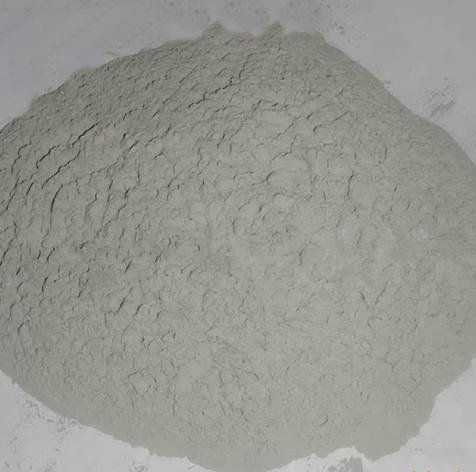
This is the most widely used cement in general construction. The ball mill grinds clinker and gypsum to a fine powder to ensure proper strength development, typically achieving 42.5 or 52.5 MPa after 28 days.
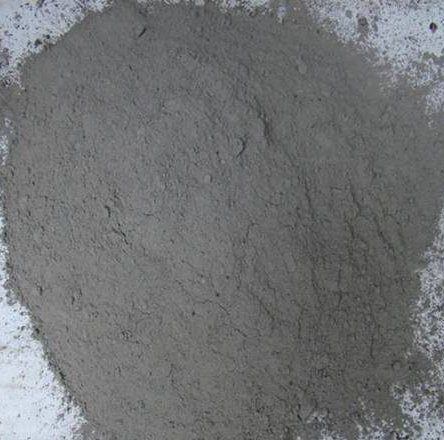
PPC is a blended cement made by grinding clinker, gypsum, and pozzolanic materials like fly ash. The ball mill ensures uniform mixing and fineness, resulting in improved durability and resistance to chemical attack.
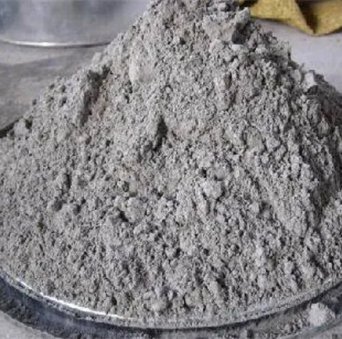
PSC is produced by grinding clinker, gypsum, and blast furnace slag. The ball mill enables fine and consistent grinding, enhancing long-term strength and chemical resistance, especially in marine or underground structures.
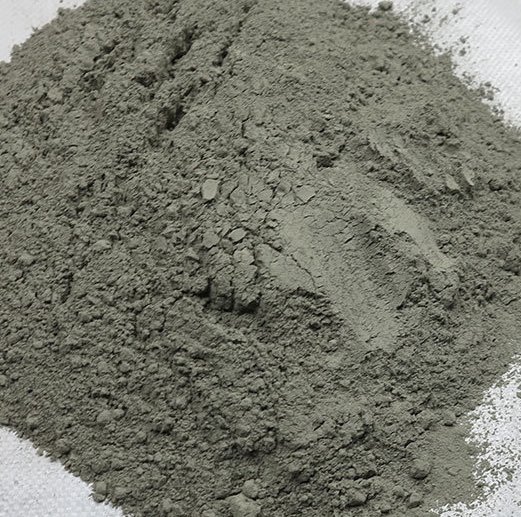
SRPC contains low C₃A content to resist sulfate attack. The ball mill finely grinds low-aluminate clinker and gypsum, ensuring the cement meets chemical standards for use in aggressive soil or water conditions.
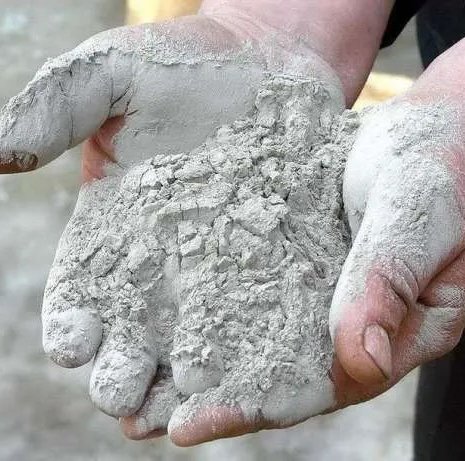
Made with low iron oxide content, white cement is used in decorative applications. The ball mill operates in a clean circuit to finely grind materials without contamination, preserving the white color.
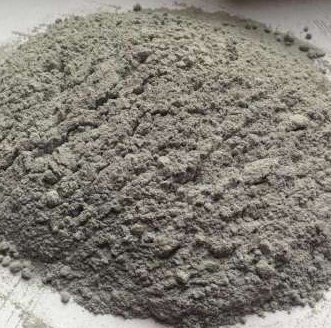
Used in oil and gas well cementing, this cement must withstand high pressure and temperature. The ball mill grinds the components to high fineness, ensuring controlled setting and strength in downhole conditions.
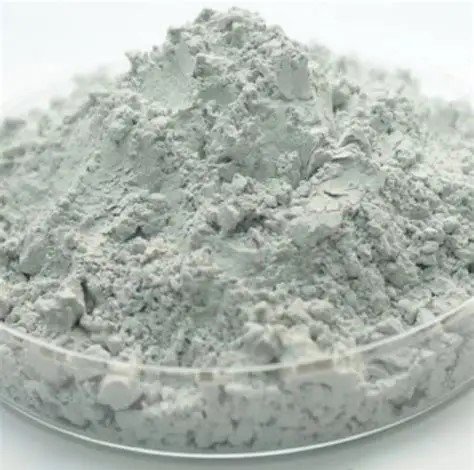
RHPC gains strength faster than OPC, ideal for precast and quick repair jobs. The ball mill grinds clinker to a finer size, accelerating the hydration process and early strength gain.
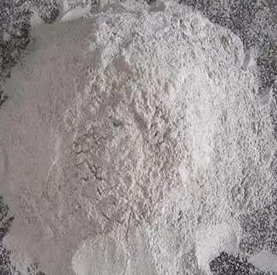
Designed for large concrete pours, this cement minimizes heat generation. The ball mill finely grinds specially selected clinker to reduce the heat of hydration, preventing thermal cracks in mass structures.
You can get in touch with us through the following contact information
AddressNo. 2289 Huancheng South Road, Tongxiang, Jiaxing, Zhejiang Province, China. Zip code:314500
Please fill in the sales inquiry form and our sales representatives will be in touch shortly.